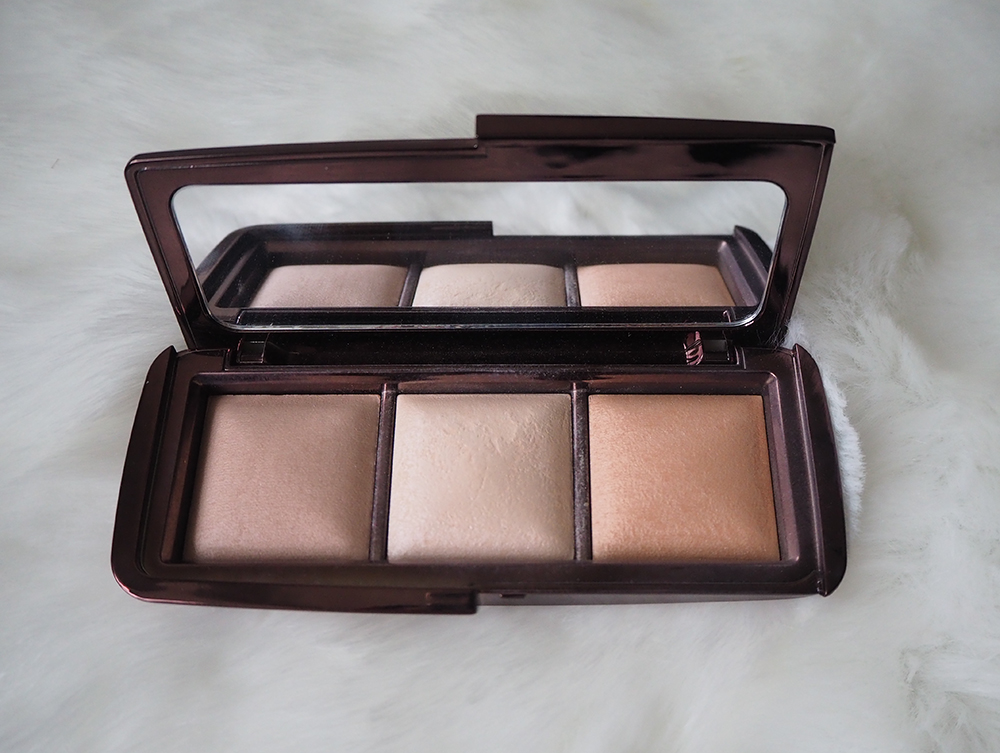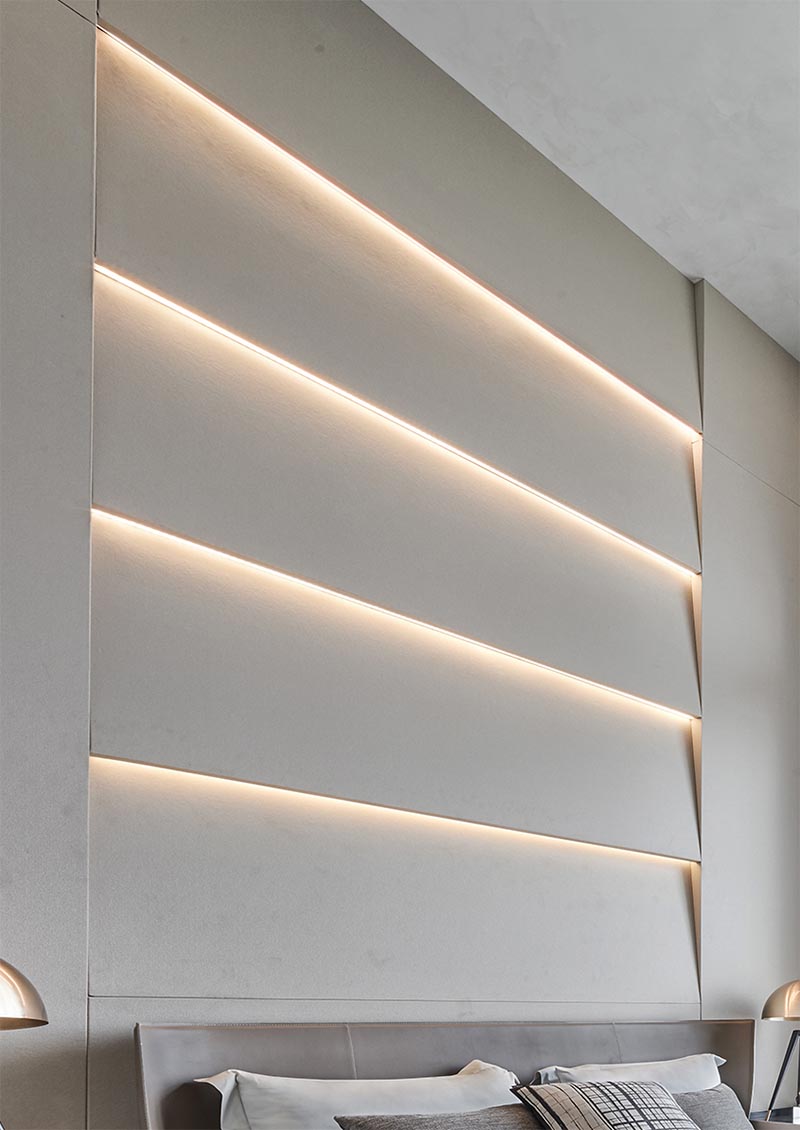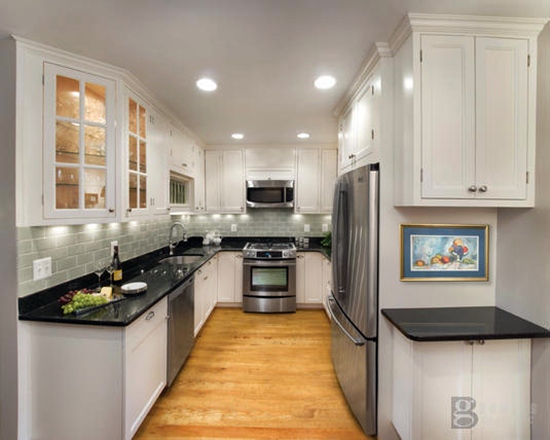1. Ambient Lighting
Ambient lighting is the overall lighting that helps to set the mood and atmosphere in your kitchen. It provides a base level of light that allows you to move around and perform tasks comfortably. This type of lighting is usually achieved through ceiling fixtures, such as chandeliers or recessed lights, and can be adjusted to create the desired ambiance. Proper placement and brightness of ambient lighting can make your kitchen feel warm and inviting.
2. Task Lighting
Task lighting is essential in any kitchen as it provides focused light for specific activities, such as cooking, prepping, and cleaning. It should be bright enough to illuminate your work areas without causing glare or shadows. This can be achieved through under cabinet lights, track lights, or pendant lights placed directly above the countertops or sink. Task lighting is crucial for safety and productivity in the kitchen.
3. Accent Lighting
Accent lighting is used to highlight and enhance certain features or elements in your kitchen, such as a beautiful backsplash, artwork, or architectural details. It adds depth and dimension to the overall lighting design and can be achieved through spotlights, track lights, or wall sconces. Accent lighting can add a touch of personality and style to your kitchen.
4. Layered Lighting
The best way to achieve a well-lit kitchen is by using a combination of ambient, task, and accent lighting. This layered approach allows you to have different levels of light for different purposes, creating a balanced and functional space. Layered lighting also adds visual interest and depth to your kitchen.
5. Dimmer Switches
Installing dimmer switches in your kitchen is a simple yet effective way to control the intensity of your lighting. They allow you to adjust the brightness according to your needs, whether you want to create a cozy atmosphere for a dinner party or need bright light for meal prep. Dimmer switches can also help save energy and extend the lifespan of your light bulbs.
6. Under Cabinet Lighting
Under cabinet lighting not only adds a stylish touch to your kitchen but also provides much-needed task lighting for your countertops. It eliminates shadows and makes it easier to see while cooking or preparing food. LED strip lights are a popular and energy-efficient option for under cabinet lighting.
7. Pendant Lights
Pendant lights are a popular choice for kitchen lighting as they come in a variety of styles and can be used as both ambient and task lighting. They are typically hung above kitchen islands or dining tables, adding a decorative element to the space. Choose pendant lights that complement your kitchen's design and add a touch of personality.
8. Recessed Lighting
Recessed lighting, also known as can lights, provide a clean and modern look to your kitchen. They are installed into the ceiling and can be used for ambient, task, or accent lighting. Proper placement of recessed lights is essential to avoid casting shadows or creating uneven lighting.
9. Natural Light
Don't underestimate the power of natural light in your kitchen. Not only does it provide a beautiful and bright atmosphere, but it also has many health benefits. Make the most of natural light by keeping your windows clean and unobstructed.
10. Light Fixtures
Last but not least, choose light fixtures that not only provide functionality but also add to the overall aesthetic of your kitchen. Whether you prefer a modern, industrial, or traditional look, there are plenty of options to choose from. Consider the size, style, and placement of your light fixtures to create a cohesive and well-designed space.
In conclusion, proper kitchen lighting is crucial for creating a functional, safe, and inviting space. By incorporating these top 10 main rules, you can achieve a well-lit kitchen that meets your needs and reflects your personal style. Remember to always consider the placement, brightness, and type of lighting for each area in your kitchen to achieve a balanced and beautiful design. With the right lighting, your kitchen can become the heart of your home.
Maximizing Space and Functionality: Rules for Kitchen Lighting

Importance of Proper Kitchen Lighting
 When it comes to designing a house, the kitchen is often considered the heart of the home. It is where meals are prepared, conversations are had, and memories are made. As such, it is important to have a well-designed kitchen that is not only aesthetically pleasing but also functional. A crucial aspect of achieving this is through proper
kitchen lighting
.
Good lighting
can enhance the overall appearance of the kitchen, make it easier to navigate, and improve safety. In this article, we will discuss some
rules for kitchen lighting
that can help you achieve a well-lit and functional kitchen.
When it comes to designing a house, the kitchen is often considered the heart of the home. It is where meals are prepared, conversations are had, and memories are made. As such, it is important to have a well-designed kitchen that is not only aesthetically pleasing but also functional. A crucial aspect of achieving this is through proper
kitchen lighting
.
Good lighting
can enhance the overall appearance of the kitchen, make it easier to navigate, and improve safety. In this article, we will discuss some
rules for kitchen lighting
that can help you achieve a well-lit and functional kitchen.
Rule #1: Layered Lighting
 The first rule for kitchen lighting is to ensure that you have
layered lighting
. This means incorporating different types of lighting such as
ambient, task, and accent lighting
. Ambient lighting provides overall illumination for the room, making it easier to navigate and perform basic tasks. Task lighting, on the other hand, is more focused and is used for specific activities such as food preparation and cooking. Lastly, accent lighting is used to highlight certain areas or features in the kitchen. By combining these different types of lighting, you can create a well-lit and functional kitchen.
The first rule for kitchen lighting is to ensure that you have
layered lighting
. This means incorporating different types of lighting such as
ambient, task, and accent lighting
. Ambient lighting provides overall illumination for the room, making it easier to navigate and perform basic tasks. Task lighting, on the other hand, is more focused and is used for specific activities such as food preparation and cooking. Lastly, accent lighting is used to highlight certain areas or features in the kitchen. By combining these different types of lighting, you can create a well-lit and functional kitchen.
Rule #2: Consider Natural Light
 Natural light is a valuable asset in any kitchen. Not only does it provide a source of
free and energy-efficient lighting
, but it also adds a sense of warmth and openness to the space. When designing your kitchen, consider the placement of windows and skylights to maximize the amount of natural light that enters the room. You can also use light-colored curtains or window treatments to allow more light in.
Natural light is a valuable asset in any kitchen. Not only does it provide a source of
free and energy-efficient lighting
, but it also adds a sense of warmth and openness to the space. When designing your kitchen, consider the placement of windows and skylights to maximize the amount of natural light that enters the room. You can also use light-colored curtains or window treatments to allow more light in.
Rule #3: Proper Placement of Lighting Fixtures
 When it comes to kitchen lighting, proper placement of lighting fixtures is essential. For ambient lighting, it is best to have a central fixture in the middle of the room. For task lighting, focus on areas where you will be performing specific tasks, such as above the stove or kitchen island. For accent lighting, consider highlighting features such as a backsplash or artwork.
Properly placed lighting fixtures
can enhance the functionality and aesthetics of your kitchen.
When it comes to kitchen lighting, proper placement of lighting fixtures is essential. For ambient lighting, it is best to have a central fixture in the middle of the room. For task lighting, focus on areas where you will be performing specific tasks, such as above the stove or kitchen island. For accent lighting, consider highlighting features such as a backsplash or artwork.
Properly placed lighting fixtures
can enhance the functionality and aesthetics of your kitchen.
Rule #4: Don't Forget About Dimmers
 Dimmers are an often overlooked but important aspect of kitchen lighting. They allow you to
adjust the brightness of the lights
according to your needs and mood. For example, you can have bright lights for cooking and preparing meals, but dim them for a more relaxed atmosphere during dinner parties. This not only adds versatility to your kitchen lighting but can also help save energy and prolong the life of your bulbs.
In conclusion, proper kitchen lighting is crucial for achieving a well-designed and functional kitchen. By following these
rules for kitchen lighting
, you can create a space that is both aesthetically pleasing and practical. Incorporating layered lighting, considering natural light, proper placement of fixtures, and using dimmers can all contribute to a well-lit and inviting kitchen. So, don't overlook the importance of good kitchen lighting when designing your dream home.
Dimmers are an often overlooked but important aspect of kitchen lighting. They allow you to
adjust the brightness of the lights
according to your needs and mood. For example, you can have bright lights for cooking and preparing meals, but dim them for a more relaxed atmosphere during dinner parties. This not only adds versatility to your kitchen lighting but can also help save energy and prolong the life of your bulbs.
In conclusion, proper kitchen lighting is crucial for achieving a well-designed and functional kitchen. By following these
rules for kitchen lighting
, you can create a space that is both aesthetically pleasing and practical. Incorporating layered lighting, considering natural light, proper placement of fixtures, and using dimmers can all contribute to a well-lit and inviting kitchen. So, don't overlook the importance of good kitchen lighting when designing your dream home.






.jpg)














































































































